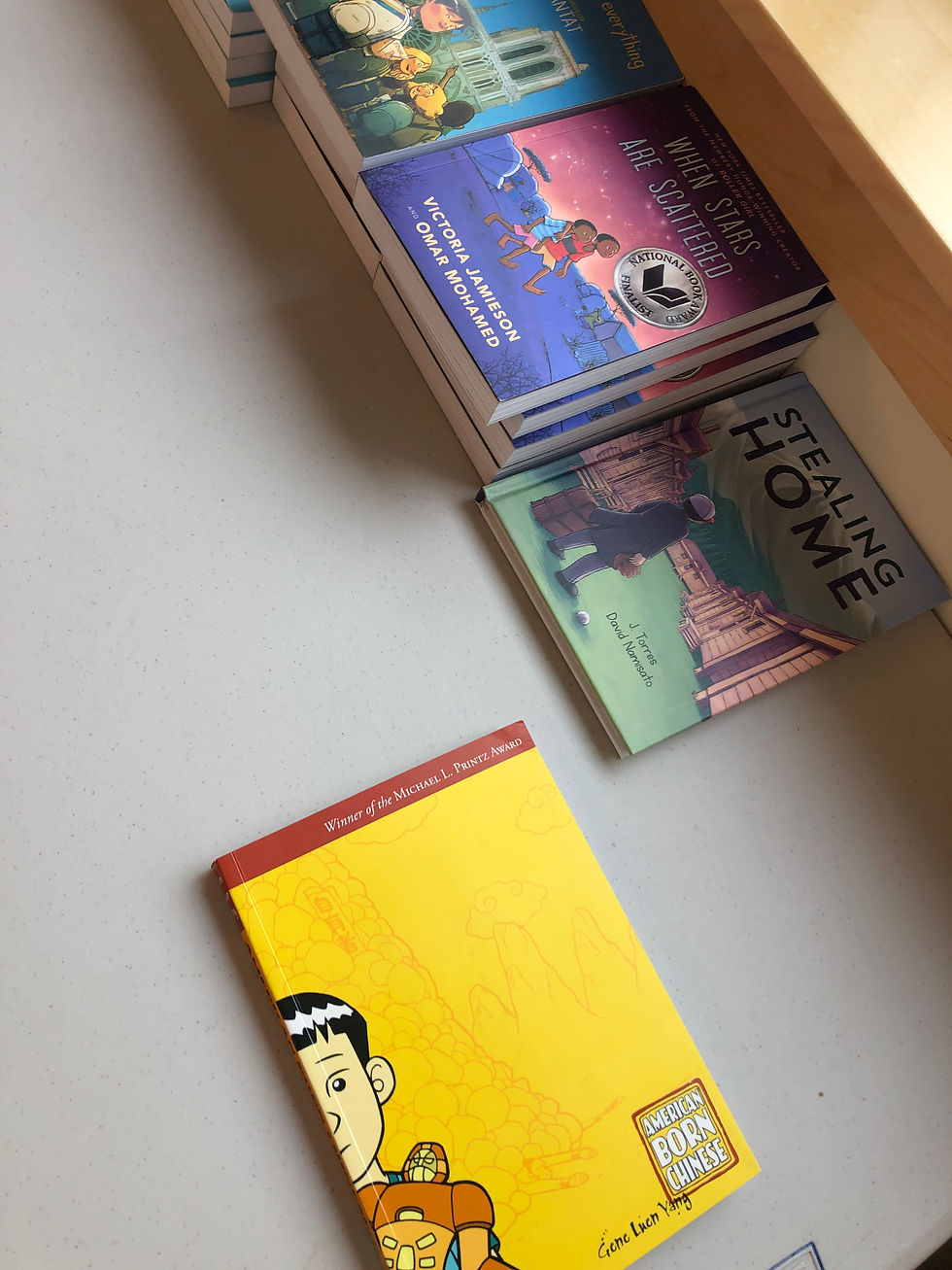Graphic Novel Book Clubs
- Brent Gilson
- Oct 1, 2023
- 3 min read

As a lifelong comic reader, I remember the countless hours combing through X-Men books, trading comics with friends, and looking through the wire-spinning racks at the convenience store. When I was a kid, comic reading was not always considered reading, but it was the gateway for me. Graphic novels in the classroom were not a thing when I was a kid. I have memories of reading Persepolis in college, but aside from that, I don't have a clear memory of being exposed to this form of text outside my comics.
When I started teaching, I brought a small collection of my comics into the classroom as I noticed kids gravitate towards them; beyond that, we had things like Diary of a Wimpy Kid or Captain Underpants. Books that engaged readers with their stories and images. I don't remember any deep topics or conversations around the texts, but they were catching readers' attention and holding it. I still have students who are exclusively trying to read Diary of a Wimpy Kid and might need a nudge to explore other texts now and again.

Last week, with the help of Canva (I really love it), I spent time talking about Graphic novels with a ninth-grade class.

We discussed the structure of graphic novels, looked at visual literacy elements, and discussed how authors and illustrators work together to tell the story depending on each other to convey a unique message to the reader.
Schedule

Each day, we would start with a mini-lesson on different literary elements, responsibilities as book club members, or reviewing other elements of graphic novels and the importance of writing about how all of those things help us to understand the story better. The book club ran for one week, Monday through Friday. Students chose books on day one after a book tasting and set goals with their book club members. Each class period was set up as the image shows—Mini Lesson-Time to Read-Time to Notebook-Time to Discuss. By Friday, each group had completed their assigned texts. It was so fun watching how engaged they were in their books.
Students are asked to complete two tasks after completing their book club (focused on various memoirs). The first is a one-pager that collects their key takeaways and observations about the text, including character discussions, exploring conflict, and other elements discussed as a class. The second element will be writing their micro memoirs that include graphic elements such as key scenes put to panels and illustrated. I am looking forward to the end result. Along with this same thinking, I asked my Grade 12 students to write an ending to Nikola Yoon's Superhuman in Graphic form and got some cool results of various artistic abilities. I love both versions as they reflect the understanding of the story in different ways.


Exploring graphic novels as a form of storytelling has been a great adventure. Students have been able to dig into the more significant ideas in their chosen texts, mentioning racism and how it shows up differently in The New Kid and Superman Smashes the Klan, but the message remains. Students of different ability levels are all working with the same texts because of the accessibility that they provide, and the discussions are richer for it. Are there wrinkles to iron out? Sure, but it is fun to explore them together.



.png)









Comments